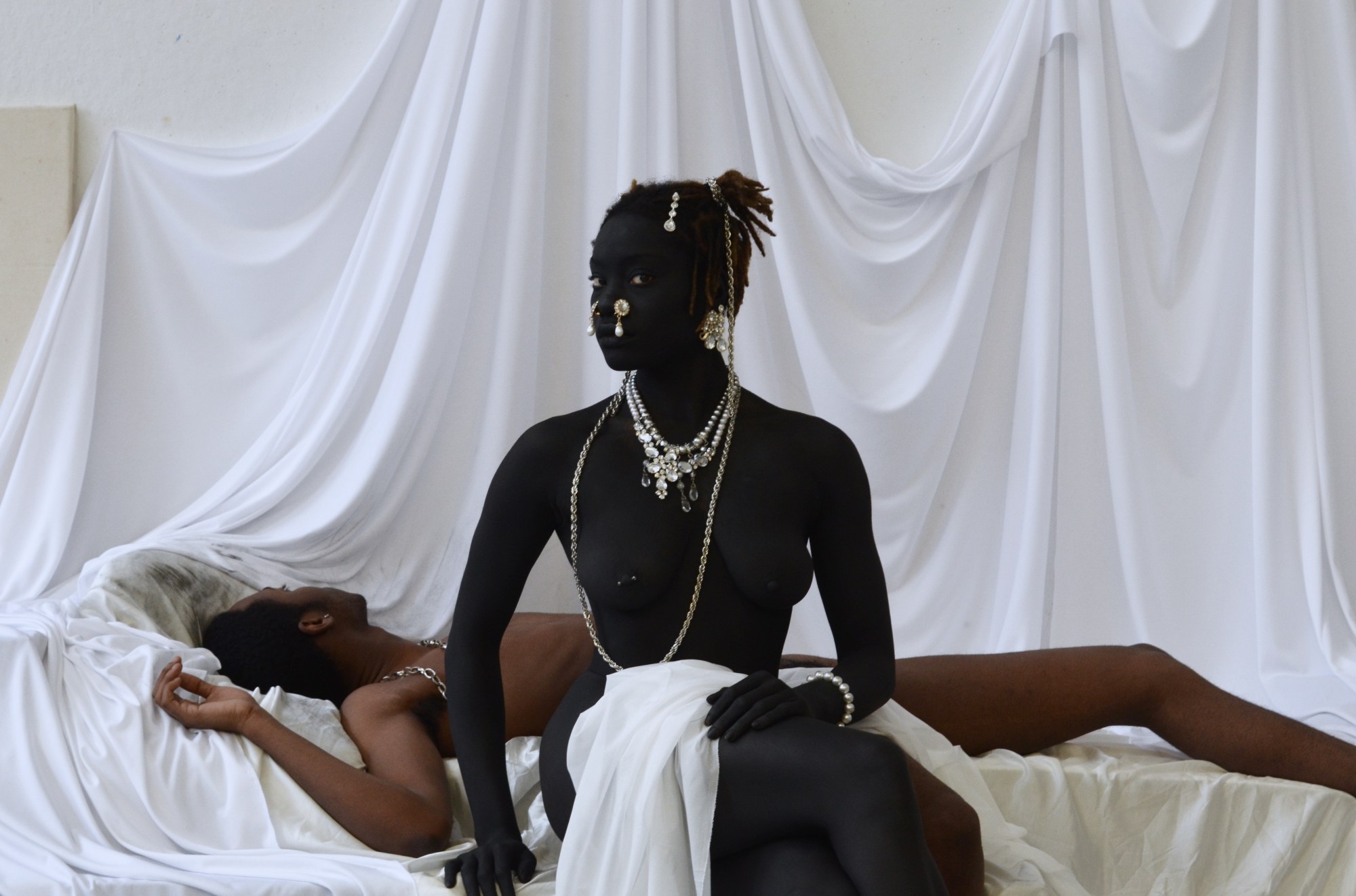Afrofuturist artists frequently imagine the African diasporic community as an alien race. Octavia Butler wrote about a black woman reproducing with aliens in Lillith’s Brood, Erykah Badu walked around a Mars-like setting in her “Don’t Cha Know” visual, and soul singer Janelle Monáe sung “I’m an alien from outer space” on her debut album. Think about it: black people have been abducted, taken to foreign worlds, and forced to assimilate. Now emerging designer Jamall Osterholm, who recently graduated from RISD, is adding a unique take on this concept with his otherworldly creations. Only 22 years old, Jamall is attempting to influence the future of black masculinity by transforming the black male body into a genderless canvas. It’s a big goal for an emerging designer. But Jamall is well positioned to accomplish it.
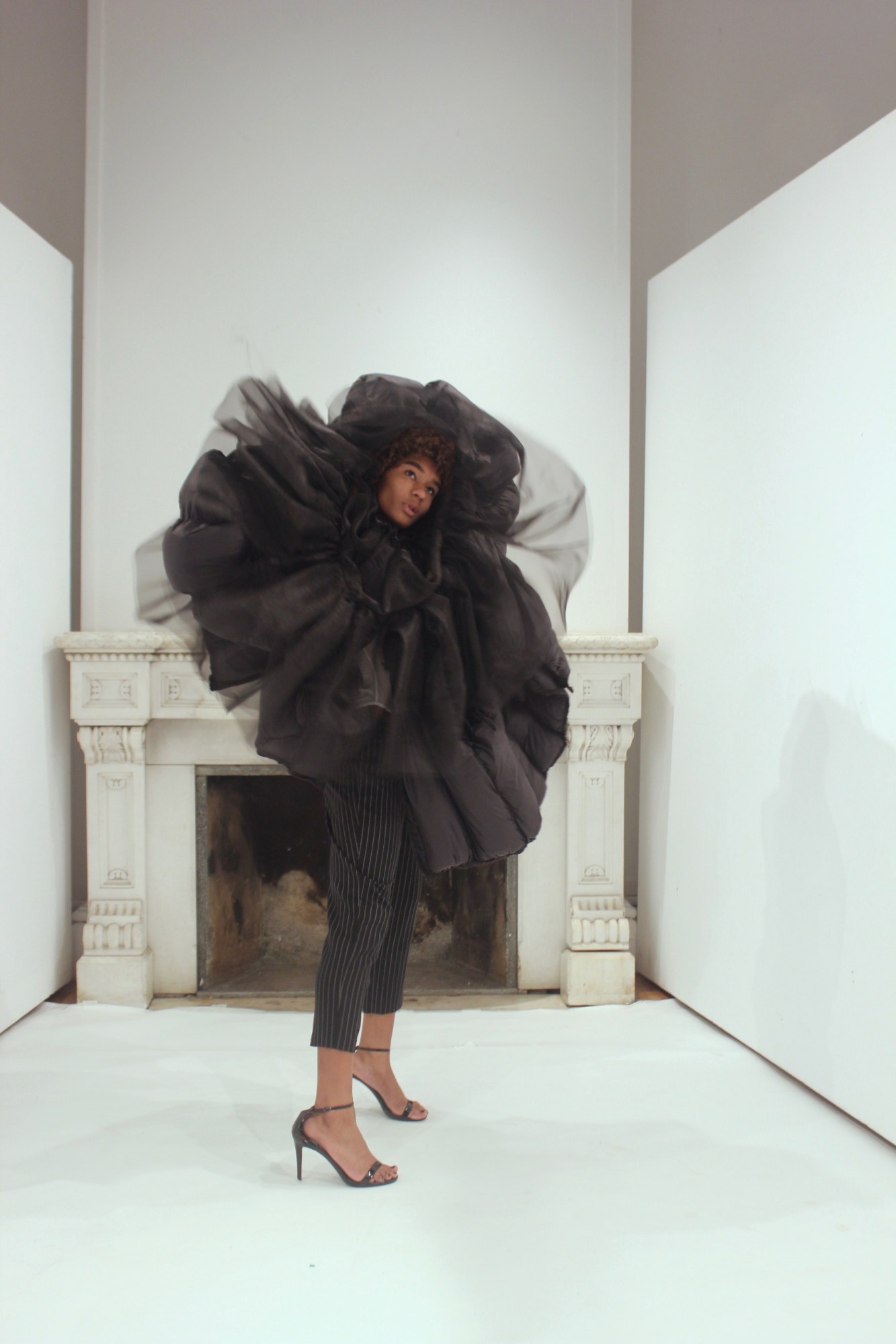
“I’ve created this all-black alien race,” Jamall says. “I’m kind of using it as a metaphor for slavery — looking at contemporary black culture as a descendant of slave culture, which would be a descendant of African culture. I’m trying to follow that linage to ask, What’s next?” This is what Jamall imagines the black future will look like: “puffer jacket” scarves that act as cocoons, billowing dresses tailored for the male body, and lots of black.
These looks are the “final form of blackness” in Jamall’s head. “It’s trying to get to a better place where black people are liberated and can fully be themselves,” he explains. Jamall conjured up this utopian vision after he took a course at RISD called “The Black Female Body” and began questioning his internalized biases. “The clothes address stereotypes of black men being hyper-aggressive, hyper-sexual, and hyper-masculine people. A big reason why I’m doing menswear is that I think the average straight black male hasn’t had the opportunity to fully express himself in the way he wants. What I’ve tried to do is take things like an oversized hoodie and change the silhouette and subvert it. I play with the cut and shape and, in a way, feminize it.”
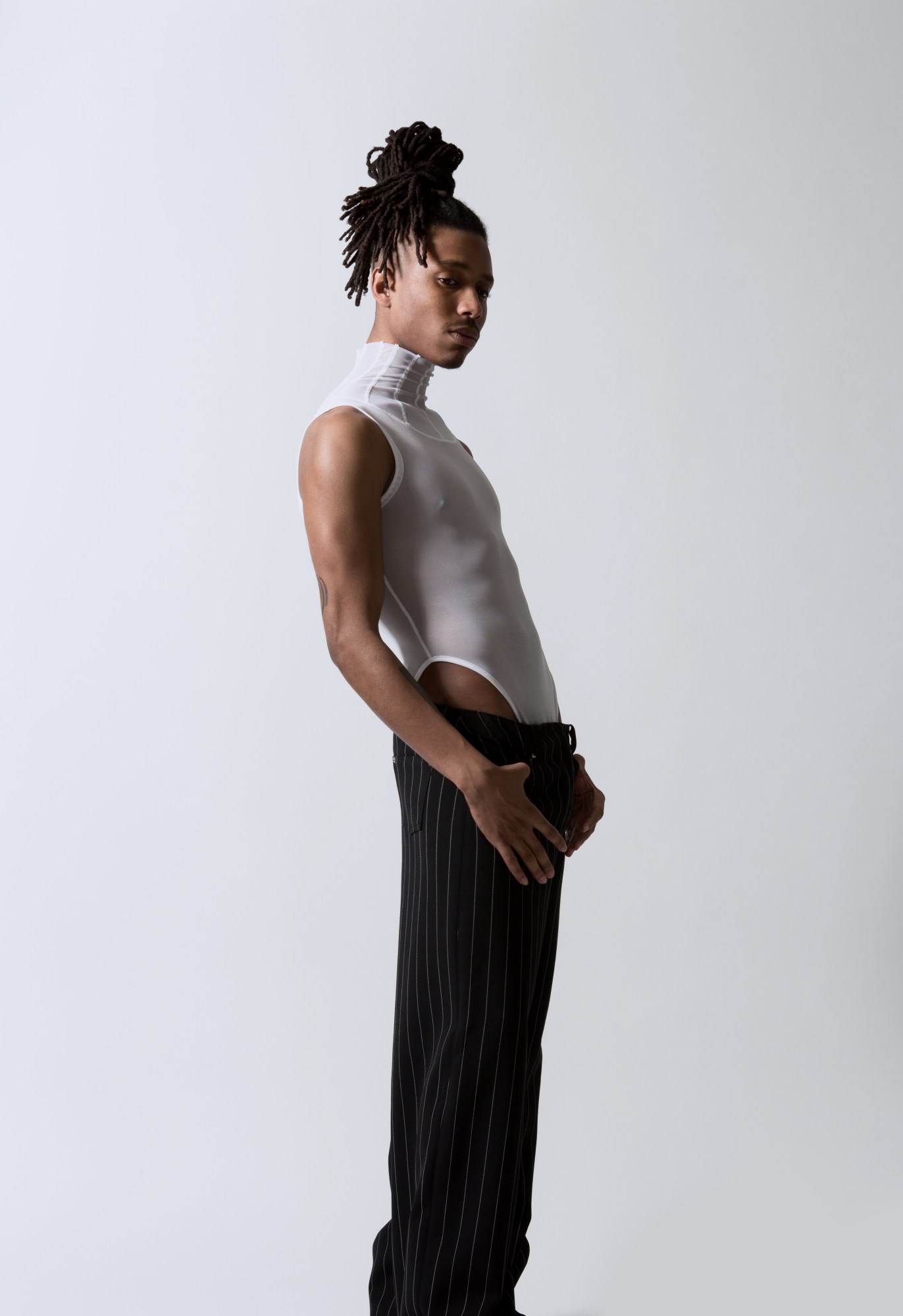
Read More: 7 Fashion Grads on How They Will Revolutionize the Industry
Jamall unexpectedly discovered his artistic purpose through fashion. Which explains why he is so passionate about helping other black men do the same. Jamall was working towards becoming a furniture designer when he started college but fell in love with designing clothes because of a degree requirement. (RISD makes its students explore courses outside of their concentration.) “Fashion was never something I set out to do, but once I tried it I started seeing making clothes as being pretty similar to making sculptures,” he tells me. While taking the class, Jamall had a dream one night in which his future self was sewing away in a studio. He was happy. When he woke up, Jamall knew exactly what he wanted to do with his life. “Making clothes has given me the chance to realize my most idyllic self,” he says with a smile.
For his first collection, Jamall explored Eurocentric beauty ideals — by dressing men in pieces including Victorian corsets. “I found myself thinking ‘beautiful’ was European. I wanted to deal with that. So I designed a collection based on my ideas of beauty and designed pieces that talked about whiteness in relation to blackness,” he explains. Jamall has moved on from that initial concept and now desires to shift away from the white gaze. “I want talk about my blackness,” he elaborates. “Not blackness in relation to whiteness, but blackness in relation to blackness.”
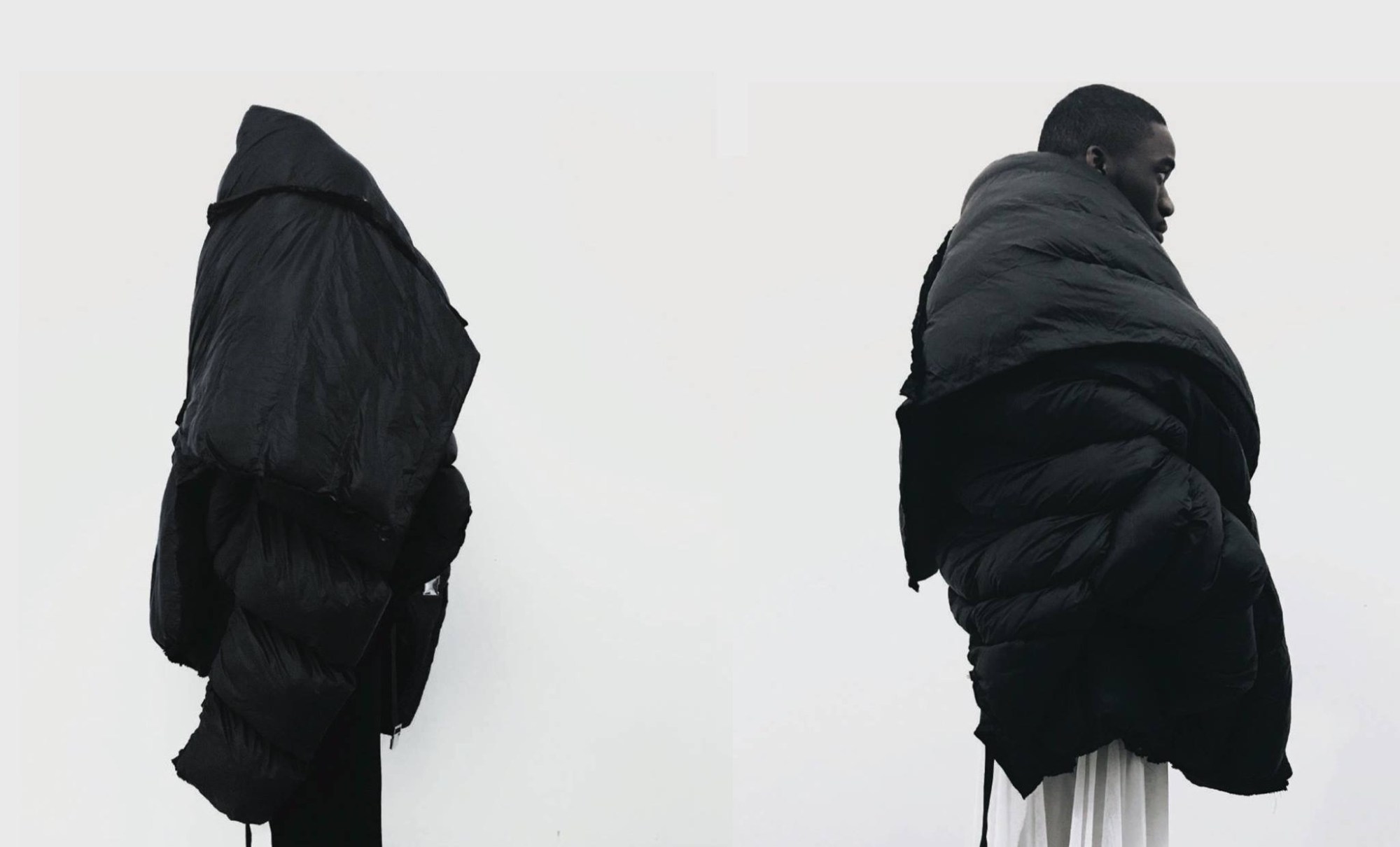
Jamall’s vision for his liberated black alien race is impressively complete. Shot by Jamall himself, the brand’s visuals hone in on underappreciated, tender parts of the male physique, like collarbones. Avoiding clichéd representations, his male models, nude under black sheer dresses, feel more vulnerable than they do erotic. “I’ve learned what it means to create a fully realized idea,” he says. “That’s why I think photography is a big part of my process. As much as it is about designing and making beautiful clothes, it’s about the overall vision you have: who’s wearing this, what is this doing in the real world? A lot my rhetoric and images may not have to do with the real world, but I think the message of men being able to express themselves in everyday life translates.”
Fresh out of college, Jamall is busy working on collaborative art projects with his friends, putting together his next collection, and trying to find a way to move to New York from his home state of Rhode Island. He says the biggest lesson he learned from his year-long thesis project is discovering how he works best as a designer. “It’s up to you to create your own schedule and work ethic, and in doing so you really find out what you have to offer,” he reflects. It’s these kind of mature statements that illustrate Jamall has specific vision for how he wants to change the way black men dress and, just as importantly, the drive and discipline necessary to make it a reality. It looks like Jamall is destined to reach the stars (or maybe another galaxy altogether).

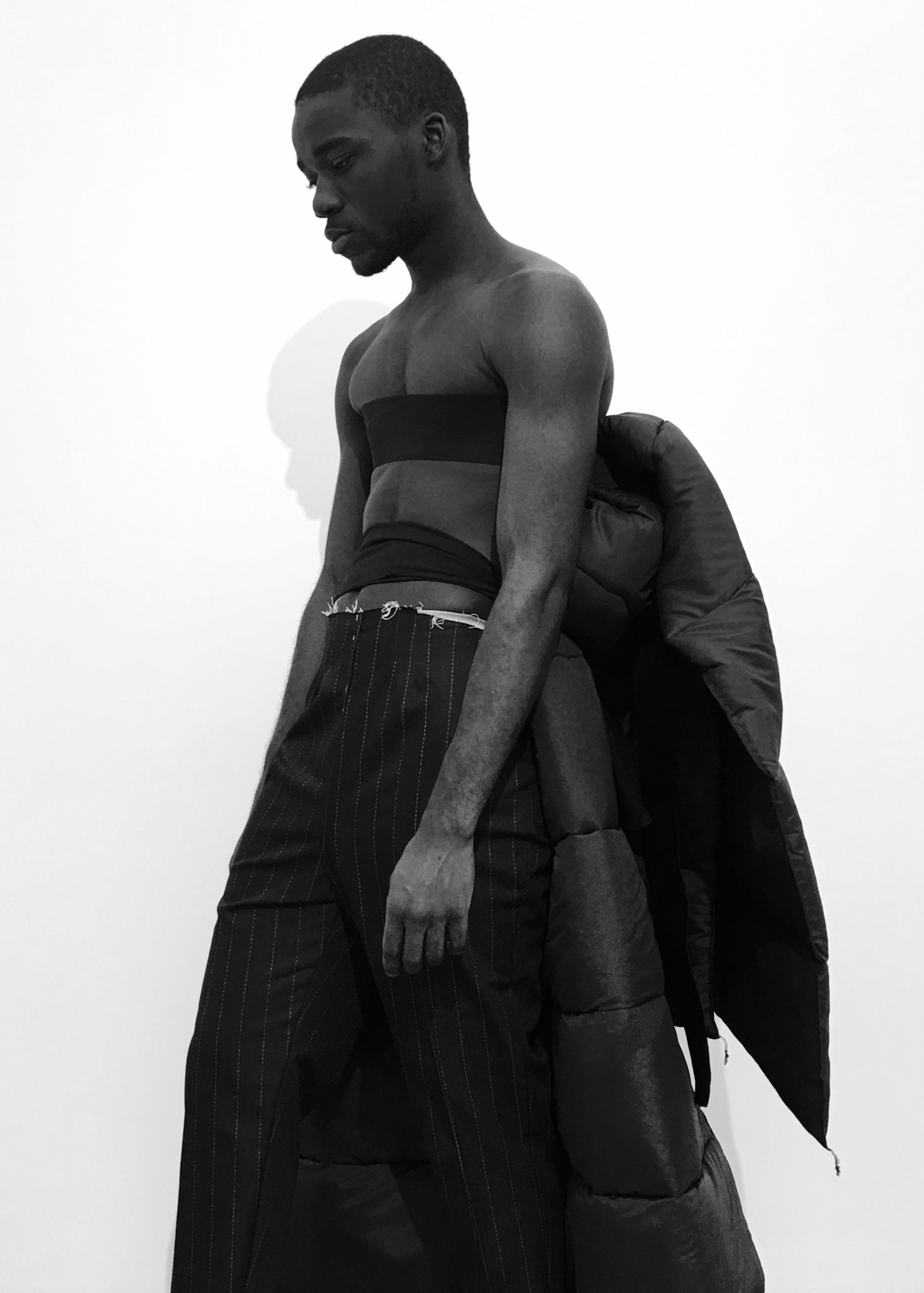
Images courtesy Jamall Osterholm
